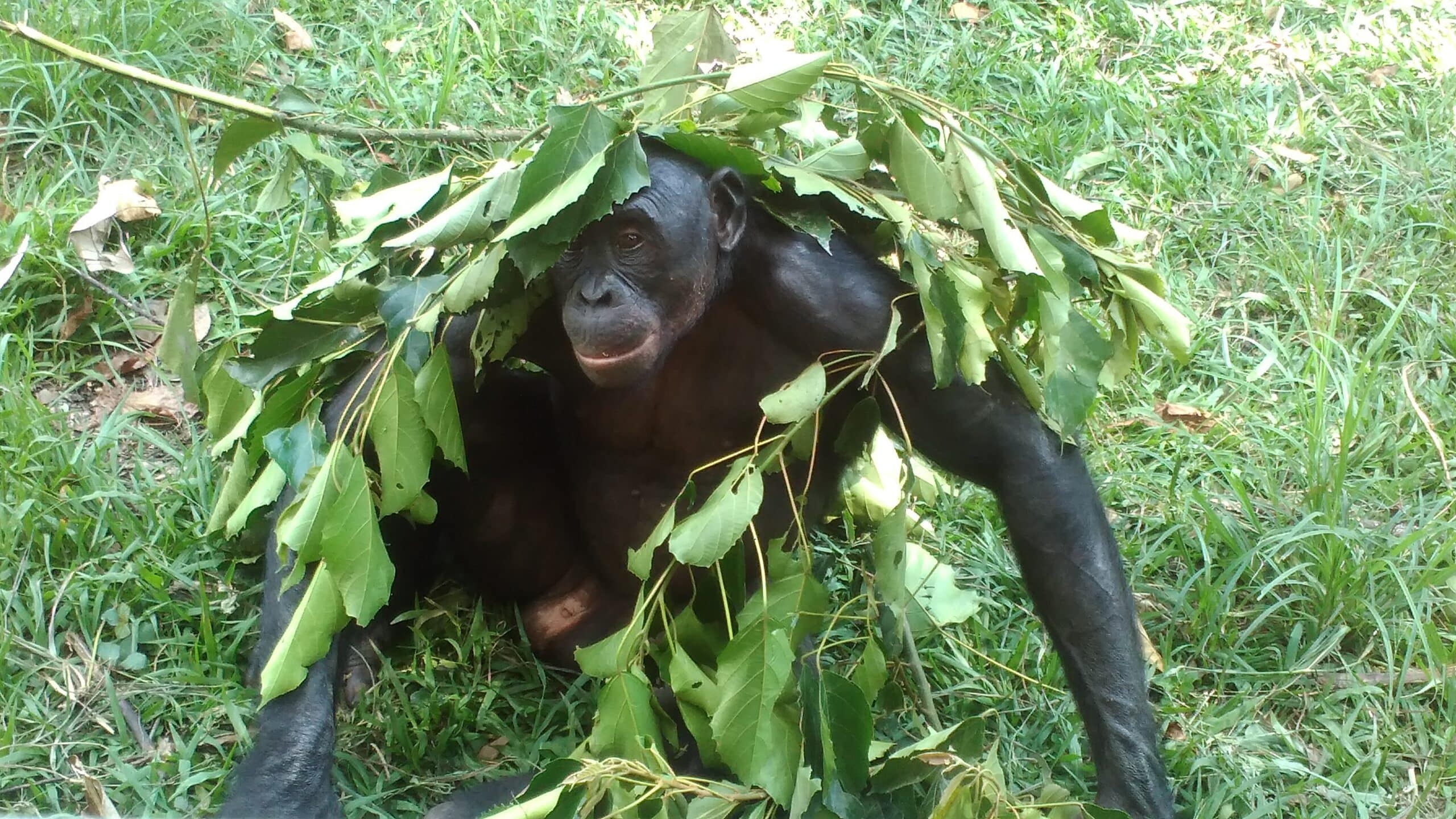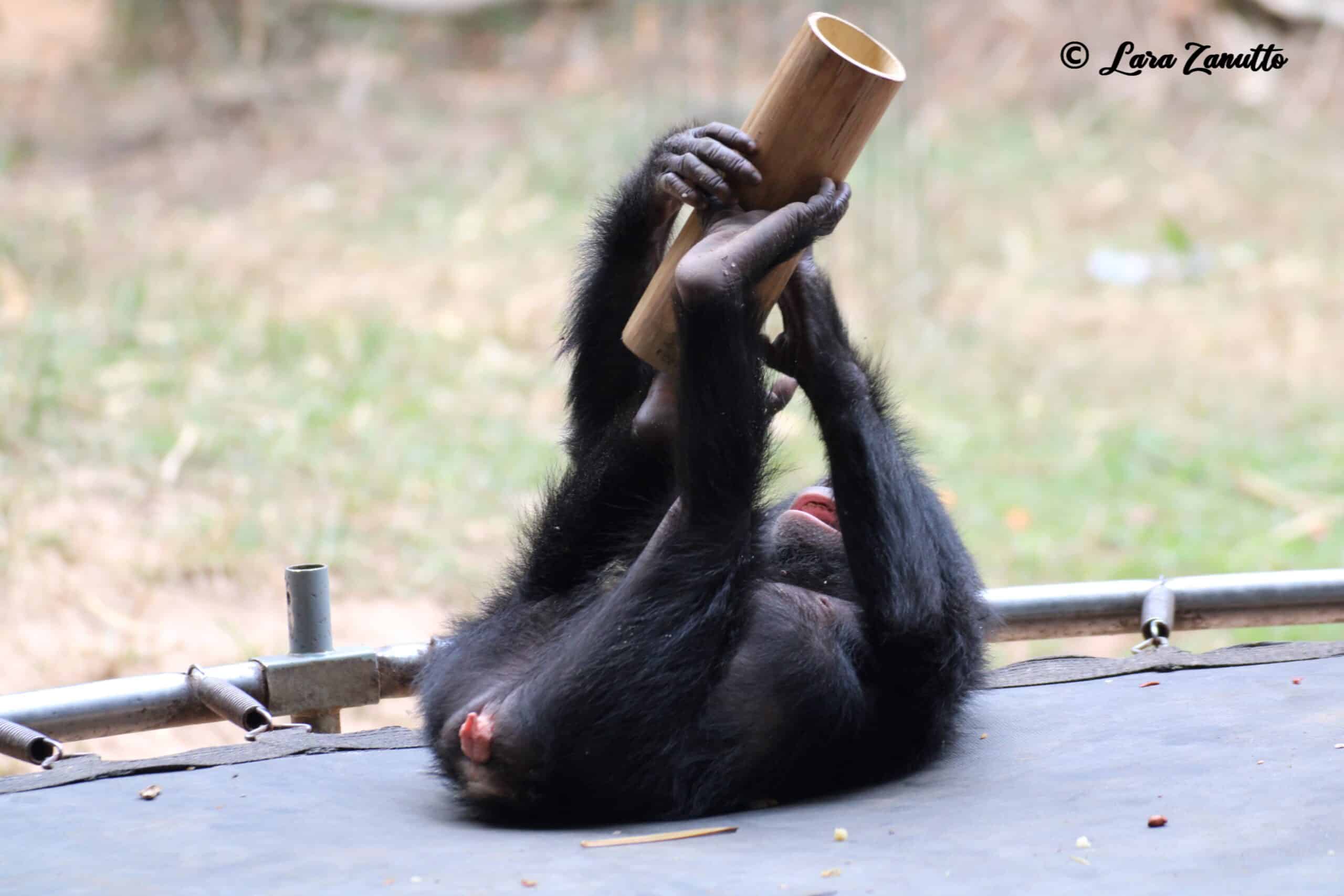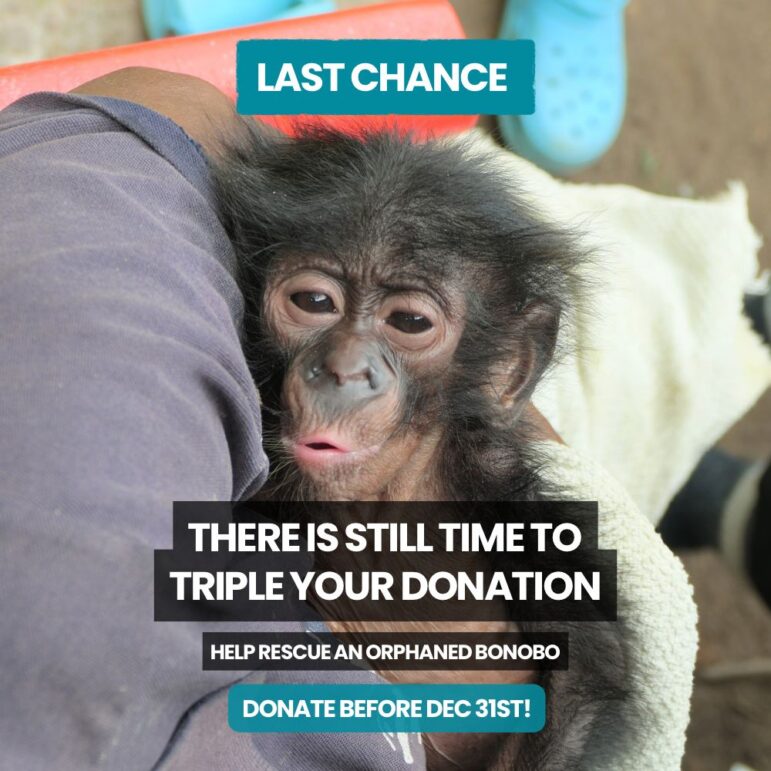What makes bonobos so different from other primates? One key factor is the biological phenomenon of neoteny, defined by the retention of playful, juvenile traits into adulthood. While it may seem like a minor developmental quirk, neoteny has played a foundational role in shaping bonobo behavior and social structure. In fact, it may be one of the clearest examples of how biology can drive the evolution of cooperation.
Neoteny occurs when an organism matures more slowly, preserving traits that are typically seen only in the young. Physically, bonobo neoteny can be observed in their more slender anatomy, smaller craniums and higher-pitched voices. Bonobos also have a distinct white tuft of fur near their tailbones, also referred to as a “pygal tail tuft.”

Chimpanzees, a close relative of bonobos, only have these tufts when they are young, but bonobos retain their tufts throughout their lives. Their childlike behavior is especially visible in males, who often continue to show playful, curious, and socially open behavior well into adulthood. This slow maturation is linked to elevated levels of a thyroid hormone called triiodothyronine (T3); higher T3 levels in male bonobos delay the onset of adult physical and behavioral traits, effectively extending the juvenile phase of life.
The Evolution of Cooperation
In bonobos, neoteny makes males more likely to form strong, long-lasting bonds with their mothers. These bonds are deeper and more persistent than what we observe in closely related species like chimpanzees, where males become more independent and competitive much earlier. For bonobos, the emotional closeness between mothers and sons continues into adulthood, often giving mothers considerable influence over their sons’ social standing.
The males rarely fight back due to the maternal dependence they haven’t grown out of; if they try, females band together to overpower any aggressive males and keep them in line.
Through these maternal bonds, females gain a powerful tool: social leverage. Mothers are the decision-makers, choosing where to forage for food and even who their sons will mate with. The males rarely fight back due to the maternal dependence they haven’t grown out of; if they try, females band together to overpower any aggressive males and keep them in line. As this dynamic evolved over time, these coalitions of allied females shifted the balance of power away from males and toward female-led social cooperation.
Play also contributed significantly to the evolution of cooperation. Chasing, tickling and wrestling are some ways that bonobos engage in play; researchers have even detected a unique “play pant” in bonobos that is now thought of as the sound of them laughing!
Surprisingly, rougher play is more common in females; neotenous males are more likely to engage in non-competitive social activities like grooming, which help reduce tension and build trust within the group. Both of these behaviors biologically contribute to regular oxytocin release in bonobos, which is the hormone that makes us feel good. More play means more social connection and more oxytocin. This more loving temperament, combined with the influence of maternal coalitions, creates an environment where cooperative behavior is rewarded, rather than punished.

Why Bonobos Became Cooperative
Scientists believe bonobos’ cooperative social structure evolved largely due to their unique environment. South of the Congo River, food was more plentiful and evenly distributed than in the habitats of their chimpanzee counterparts. In this resource-rich setting, there was less need for competition and aggression. Traits like patience, bonding, and trust became more valuable, and over generations, the species began to evolve in that direction. The evolution of cooperation became not only possible, but advantageous.
Neoteny was central to this trajectory. Slower development allowed individuals to remain flexible, socially open, and emotionally connected. It helped create a society where strength came not from fear or domination, but from coalition, empathy, and care. Bonobos used youthfulness as a building block for a more cooperative society.
In studying neoteny in bonobos, we gain more than just insight into one species. We see how biology, environment, and social structure interact to shape behavior in profound ways. And perhaps most importantly, we see how softness and connection, traits often dismissed as weak in nature, can become the driving forces behind a very powerful force for good: cooperation.
Harini Sridar is a neurobiology and sociocultural anthropology graduate at UC San Diego. She is interested in exploring the intersection of neuroscience, behavior, and social systems. Her honors thesis explored female dominance and prosocial behavior in bonobos, seeking to understand how bonobos have subverted patterns of male-mediated violence so often observed in nature. Through both her academic and advocacy work, she aims to bridge biological and cultural perspectives to reimagine how we understand cooperation, stress, and wellbeing across species. Harini spends her free time teaching dance and volunteering at her local animal shelter.
REFERENCES
Behringer, V., Deschner, T., Murtagh, R., Stevens, J. M., & Hohmann, G. (2014). Age-related changes in thyroid hormone levels of bonobos and chimpanzees indicate heterochrony in development. Journal of human evolution, 66, 83-88.
Enomoto, T. (1990). Social play and sexual behavior of the bonobo (Pan paniscus) with special reference to flexibility. Primates, 31, 469-480.
Furuichi, T. (2011). Female contributions to the peaceful nature of bonobo society. Evolutionary Anthropology: Issues, News, and Reviews, 20(4), 131-142.
Gruber, Thibaud, and Zanna Clay. “A comparison between bonobos and chimpanzees: a review and update.” Evolutionary Anthropology: Issues, News, and Reviews 25.5 (2016): 239-252.
Mao, Y., Catacchio, C.R., Hillier, L.W. et al. A high-quality bonobo genome refines the analysis of hominid evolution. Nature 594, 77–81 (2021)
Moscovice, L. R., Surbeck, M., Fruth, B., Hohmann, G., Jaeggi, A. V., & Deschner, T. (2019). The cooperative sex: sexual interactions among female bonobos are linked to increases in oxytocin, proximity and coalitions. Hormones and Behavior, 116, 104581.
Parish, A. R. (1996). Female relationships in Bonobos (Pan paniscus) Evidence for bonding, cooperation, and female dominance in a male-philopatric species. Hu Nat, 7(1), 61-96.



